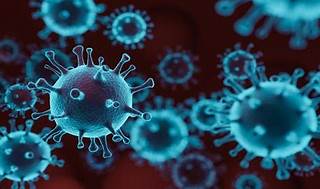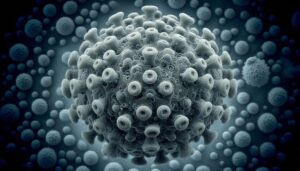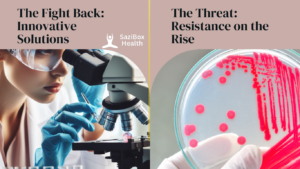Infectious diseases have been a constant threat to humanity throughout history, shaping our societies and driving medical advancements. From the bubonic plague to the recent COVID-19 pandemic, understanding how these diseases work and how to prevent them remains crucial for our well-being.
This article delves deeper into the world of infectious diseases, exploring their causes, symptoms, and most importantly, the ways we can defend ourselves.

A Closer Look at Infectious Diseases:
Infectious diseases are caused by microscopic invaders – pathogens like bacteria, viruses, parasites, and fungi. These pathogens can spread from person to person through various means, including:
- Airborne transmission: Coughing, sneezing, or talking can expel respiratory droplets containing pathogens. (e.g., influenza, measles)
- Contact transmission: Direct contact with an infected person or contaminated surfaces can spread pathogens. (e.g., common cold, hepatitis A)
- Foodborne transmission: Consuming contaminated food or water can introduce pathogens into the body. (e.g., salmonellosis, E. coli)
- Vector-borne transmission: Insects or animals can transmit pathogens to humans through bites. (e.g., malaria, Lyme disease)
Understanding the Enemy: Specific Examples:
Let’s explore some common infectious diseases to illustrate the different aspects we discussed:
- The Flu: Caused by influenza viruses, the flu is a highly contagious respiratory illness. Symptoms include fever, chills, cough, sore throat, headache, muscle aches, and fatigue. Vaccination is the most effective way to prevent influenza, along with frequent handwashing and avoiding close contact with sick people.
- Foodborne Illness: Caused by bacteria like E. coli or Salmonella, foodborne illnesses result from consuming contaminated food or water. Symptoms can vary depending on the pathogen but often include nausea, vomiting, diarrhoea, and abdominal cramps. Proper food handling and hygiene practices are essential for prevention.
- Malaria: Transmitted by infected mosquitoes, malaria is a life-threatening parasitic disease causing fever, chills, sweats, headache, and muscle aches. While no perfect vaccine exists yet, mosquito nets, insect repellents, and antimalarial medications play a crucial role in prevention and treatment.
Symptoms as Signals: Recognizing the Threat:
The human body’s response to infection often manifests through a variety of symptoms. These act as red flags, alerting us to potential danger. Here are some common signs that might indicate an infectious disease:
- Fever (elevated body temperature)
- Fatigue (tiredness and lack of energy)
- Coughing or sneezing
- Sore throat
- Muscle aches and pains
- Diarrhea or vomiting
- Skin rash
Our Defenses: Prevention and Treatment:
Fortunately, we have a powerful arsenal against infectious diseases:
- Vaccinations: Vaccines train our immune system to recognize and fight specific pathogens, significantly reducing the risk of infection. Vaccines are one of the most effective public health interventions ever developed.
- Hygiene Practices: Frequent handwashing with soap and water, proper coughing and sneezing etiquette, and maintaining clean surroundings can significantly reduce the spread of many pathogens.
- Safe Food Handling: Following recommended practices like cooking food to proper temperatures, storing food appropriately, and avoiding cross-contamination in the kitchen helps prevent foodborne illnesses.
- Antibiotics (for bacterial infections): These medications can be life-saving in fighting bacterial infections, but it’s crucial to use them only as prescribed by a doctor and complete the full course of treatment to prevent antibiotic resistance.
- Antiviral medications (for viral infections): These medications can help alleviate symptoms and shorten the duration of some viral illnesses.
Emerging Threats and Ongoing Battles:
The fight against infectious diseases is an ever-evolving battle. New pathogens emerge, and existing ones develop resistance to treatment. This underscores the importance of continued research and development of new vaccines, diagnostics, and treatment strategies.
Understanding infectious diseases empowers us to protect ourselves and our loved ones. By employing preventive measures like vaccination, practising good hygiene, and seeking timely medical care, we can minimize the impact of these threats. Remember, knowledge is power, and informed action is our best defence against the ongoing battle against infectious diseases.
Sources:
- World Health Organization (WHO): https://www.who.int/
- Centers for Disease Control and Prevention (CDC): https://www.cdc.gov/
- National Institutes of Health (NIH): https://www.nih.gov/
Note: This article provides a general overview. Always consult a healthcare professional for diagnosis and treatment of any specific illness.



